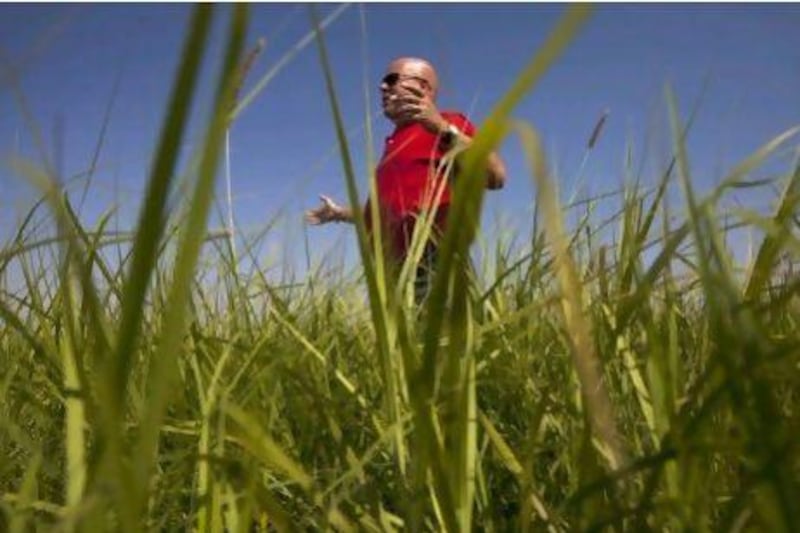AL AIN // Rashid Khamis Burshaid knows growing crops on sandy soil can be quite challenging because of the lack of water in the UAE.
His farm in Khor Fakkan, located on the country's east coast, grows 2,000 square metres of sorghum grass - a type of salt-tolerant plant used to feed livestock.
"I grow this grass to feed my 50 head of cattle," said Mr Burshaid. "And although the plant doesn't use a lot of water, I have to travel half a kilometre to get water from a well because my soil is very salty."
Mr Burshaid is one of many farmers who encounters trouble while growing feed for the livestock.
Rhodes grass was widely grown in the UAE until the government halted its planting in 2010 because it was so thirsty. Before then, it accounted for three of every five litres of water used in agriculture.
According to the Abu Dhabi Food Control Authority, agriculture consumes 48 per cent of the country's water - and 60 per cent of that was used to produce Rhodes grass for animal forage.
And although harvesting salt-tolerant plants could help reduce the water needed to grow animal feed, experts say it might not be enough. So they are turning to irrigation systems to help cut water usage. "If you use sub-surface irrigation, there's no evaporation and no spray loss," said Bart Rehbein, the managing director of Epic Green Solutions, which specialises in sub-surface irrigation. "And forage grass uses a lot of water."
The system involves an underground water tank linked to interconnected cells under the crops. Water flows from the tank to the cells through pipes. It reaches the plant roots once it gets to the cells.
Last March, the company installed the system in Al Dahra Agricultural Company's farm in Al Ain to grow forage grass on three 420-square metre-plots of land.
"This is our fourth harvest growing two kinds of buffel grass including laredo, which originates from South Africa, and a native Arabic one called lebed," said Mr Rehbein. "Both tend to be drought and saline-tolerant."
The laredo seeds were flown in from Texas while the Arabic plants were grown from small, local seedling plants. Each harvest is between six to eight weeks.
"This system for grass is doing very well," said Laith Al Ogaili, Al Dahra's farm manager in Al Ain. "It's a fantastic way to save water."
The aim of the trial is to show the benefits of using sub-surface irrigation to the Farmers' Services Centre, a government body tasked with modernising Abu Dhabi farms. So far, the system has produced more yield using less water compared to traditional irrigation methods.
"These plots use five litres of water per square metre a day while the drip uses up to 20 litres," said Mr Rehbein. "We've also managed to produce between 10,000 and 13,000 kilograms of grass for each 1,000 square metres, while the drip produced 2,000."
Although it is more expensive than the traditional drip - costing on average Dh100 to Dh125 per square metre compared with Dh50 - it manages to save one of the UAE's most scarce natural resources. "We also save on space because crops are grown in rows with the drip irrigation," said Mr Rehbein. "So with 30cm-wide rows separated by a 50cm gap in between for a drip line to go through them, a lot of space is wasted."
The grass produced so far has been used to feed the farm's livestock. "We will cut it now and it will keep growing, every six to eight weeks," said Mr Rehbein.
[ cmalek@thenational.ae ]






